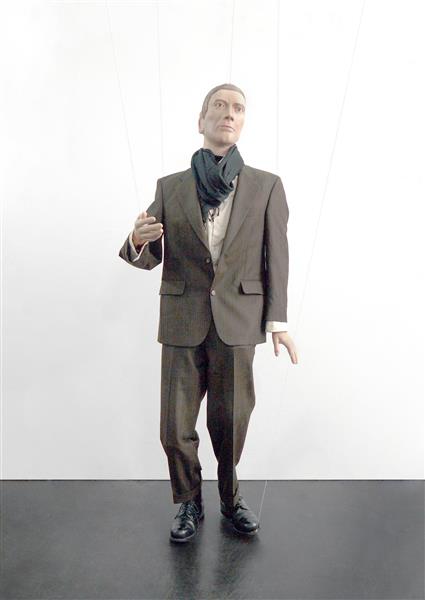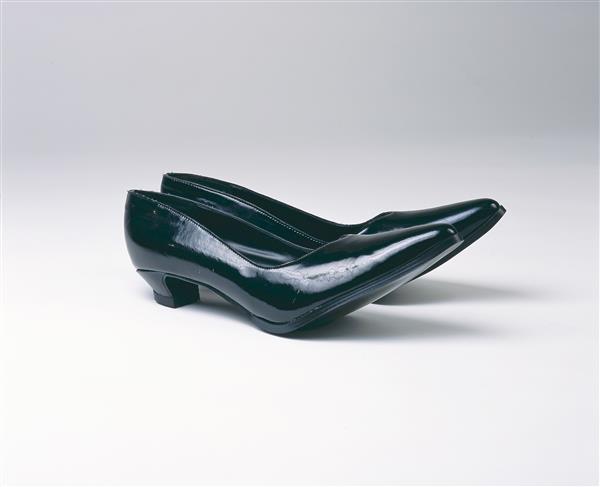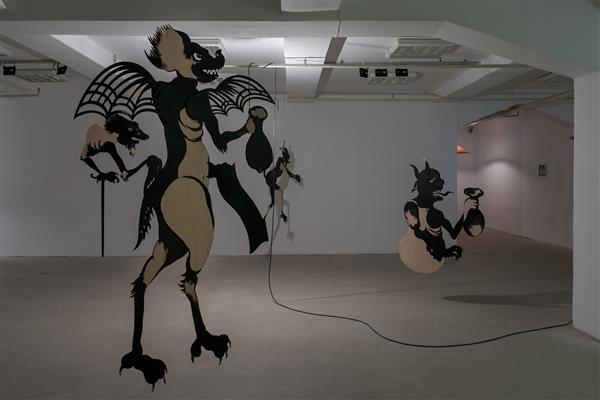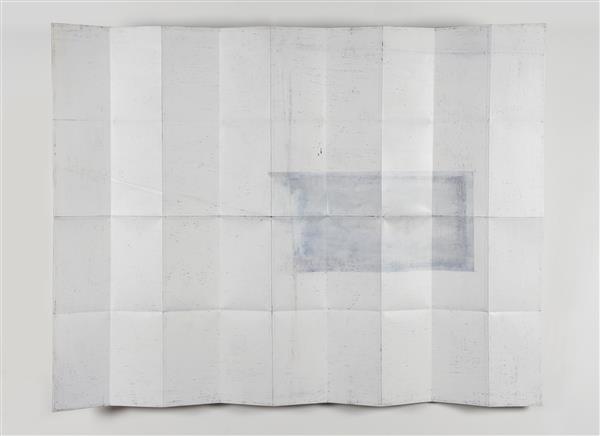Ali
Markus Schinwald
puppet, motion sensor, wood, fabric, strings
h 170 cm approx.
2011
Acquisition 2012
Inv. No. 0227
With a pressing mix of the familiar with the strange, Markus Schinwaldʼs work is as diverse as it is mysterious. He is a master in the organization of his image-worlds – their outward appearance is always aesthetically perfect and artificial, the secret inner-life, however, is unfathomable and highly disturbing. His name is Ali, and he looks like a geography teacher from the 1980s, wearing a somewhat banal suit and a much too luxurious scarf. The man is nervous. If you come close, he begins to tap hectically on the floor with his left foot. He is hanging on transparent fishing line and is actuated by a motion-sensor. The threads refer to the control exercised by an invisible power. Marionettes like this one are Markus Schinwaldʼs most dangerous group of work. Beyond the norm, they topple out of normality. They are life-sized, sitting or standing on swings, twitching about on chairs or, like Statler and Waldorf from The Muppet Show, observing events from a balcony far above. They all have small, neurotic tics. Shinbones are important, feet, hands and shoulders. Otto is the name of the prototype. In the film Childrenʼs Crusade he is leading a band of child pilgrims. Accompanied by Benjamin Britten's choir music, girls and boys follow an uncanny giant in a grey business suit. With the help of a rotary-mechanism, the facial expressions and features of the marionette alternate. Neither good, nor bad, they show the two sides of a person. The phantasm of automata and the mechanical human have fascinated artists even before E.T.A. Hoffmanʼs story The Sandman was published in 1816. Schinwaldʼs marionettes are forceful stylistic devices. He doesnʼt put any stock in making them as human as possible, like androids in science fiction. On the contrary, he uses historical puppets, supplies them with small, topical flaws, programs crass sequences of motion, and brings the parodic potential of the device to the fore. His relationship with changes, improvements and arrangement has a long history based on the body as a cultural construction. Schinwald drifts over cultures, media and genres and retires to a not-so-distant orbit from which he has a good view of the settings for blurred identities, displaced layers of reality, and his puppet-theater.
Brigitte Huck, 2015 (translation: Virginia Dellenbaugh)
Continue readingExhibitions
Small Medium Large. Sculptures and Objects from the evn collection, evn sammlung, Maria Enzersdorf, 2022
The Cindy Sherman Effect. Identity and Transformation in Contemporary Art, Kunstforum Bank Austria, Vienna, 2020
Markus Schinwald, CAPC Musee d'art contemporain, Bordeaux, 2013
Publications
The Cindy Sherman Effect. Identity and Transformation in Contemporary Art [published in conjunction with the exhibition “The Cindy Sherman Effect. Identity and Transformation in Contemporary Art”, Bank Austria Kunstforum Vienna, January 29 to June 21, 2020], Munich 2020, p. 136
evn collection. 95–2015 Jubilee, Vienna 2015, p. 316 f



